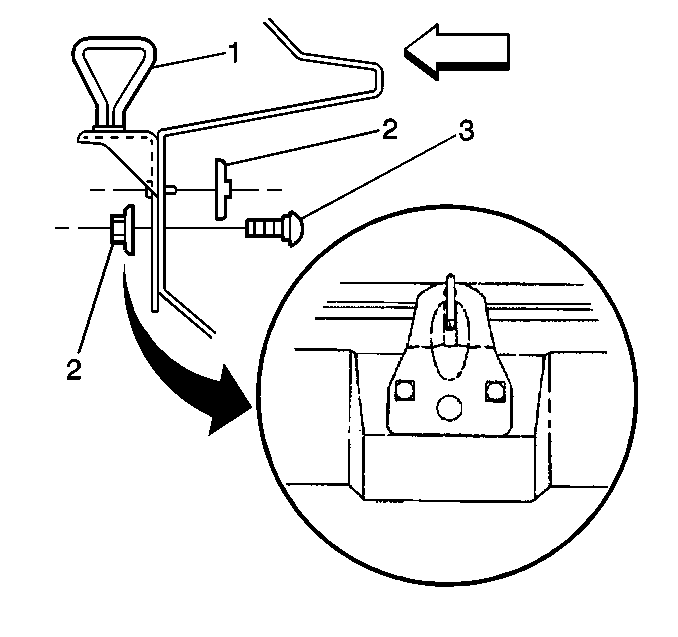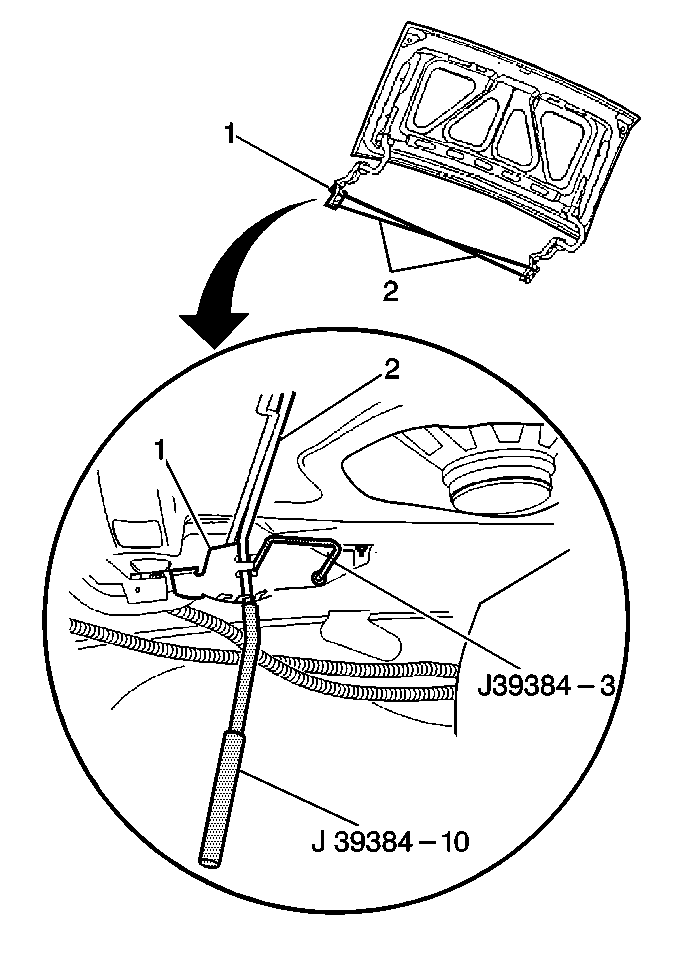
Important: Verify that the rubber overslam bumpers are completely screwed
into the rear compartment lid. Do NOT use the overslam bumpers for adjustment.
- With the lid (2) in the closed position, verify the fore/aft
adjustment of the rear compartment lid at the rear corners of the lid. Verify
the flushness of the lid to the quarters.
If adjustment is necessary, loosen the bolts (1) that connect
the rear compartment lid to the hinge. Adjust the lid.
Notice: Use the correct fastener in the correct location. Replacement fasteners
must be the correct part number for that application. Fasteners requiring
replacement or fasteners requiring the use of thread locking compound or sealant
are identified in the service procedure. Do not use paints, lubricants, or
corrosion inhibitors on fasteners or fastener joint surfaces unless specified.
These coatings affect fastener torque and joint clamping force and may damage
the fastener. Use the correct tightening sequence and specifications when
installing fasteners in order to avoid damage to parts and systems.
- Tighten the hinge
bolts (1).
Tighten
Tighten the bolts to 25 N·m (18 lb ft).

- If the rear compartment
lid is not flush at the rear, loosen the inner latch striker mounting nut (2).
Close the rear compartment lid.
- From beneath the rear bumper fascia, mark the vertical location
of the outer latch striker mounting nuts (2).
- Loosen the outer latch striker mounting nuts.
| 5.1. | The latch striker (1) should move upward. |
| 5.2. | If the latch striker does not move, the striker is probably at
the top of its adjustment range. Make an adjustment to the latch assembly. |
- Verify that the rear compartment lid remains flush to the quarter
panels. Tighten the outer latch striker mounting nuts (2).
Tighten
Tighten the nuts to 9 N·m (80 lb in).
- Tighten the inner latch striker mounting nut.
Tighten
Tighten the nut to 9 N·m (80 lb in).



